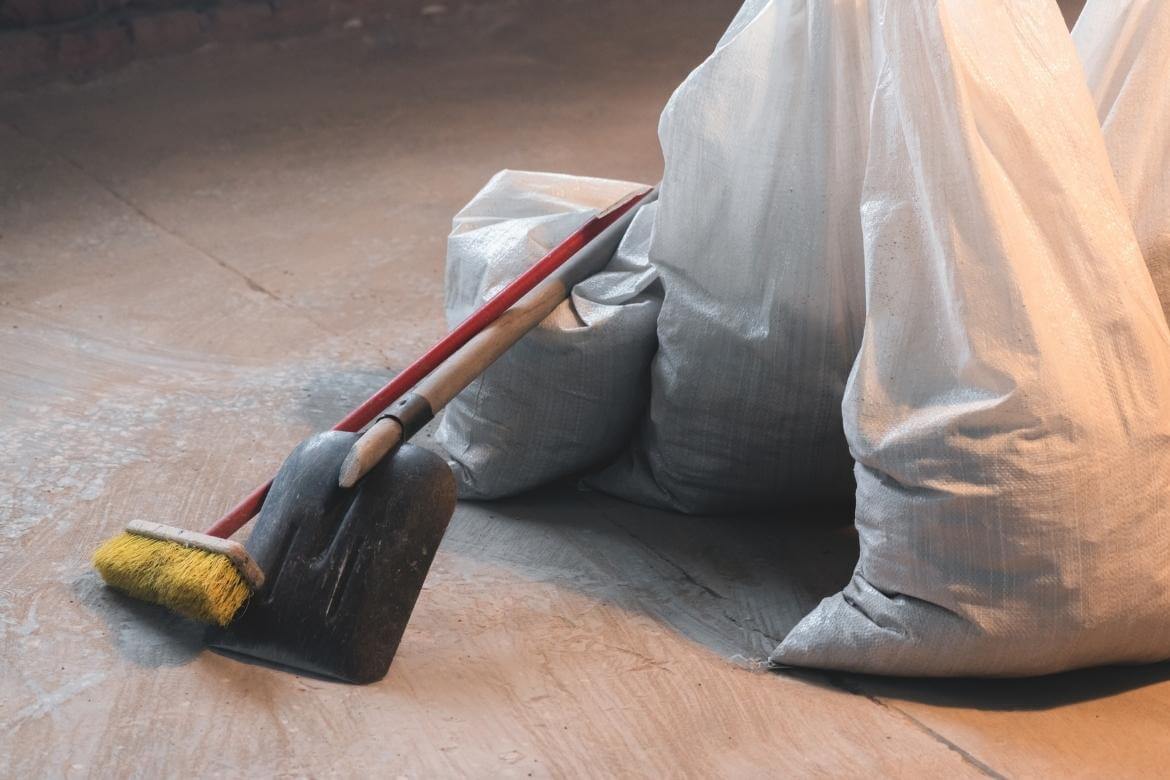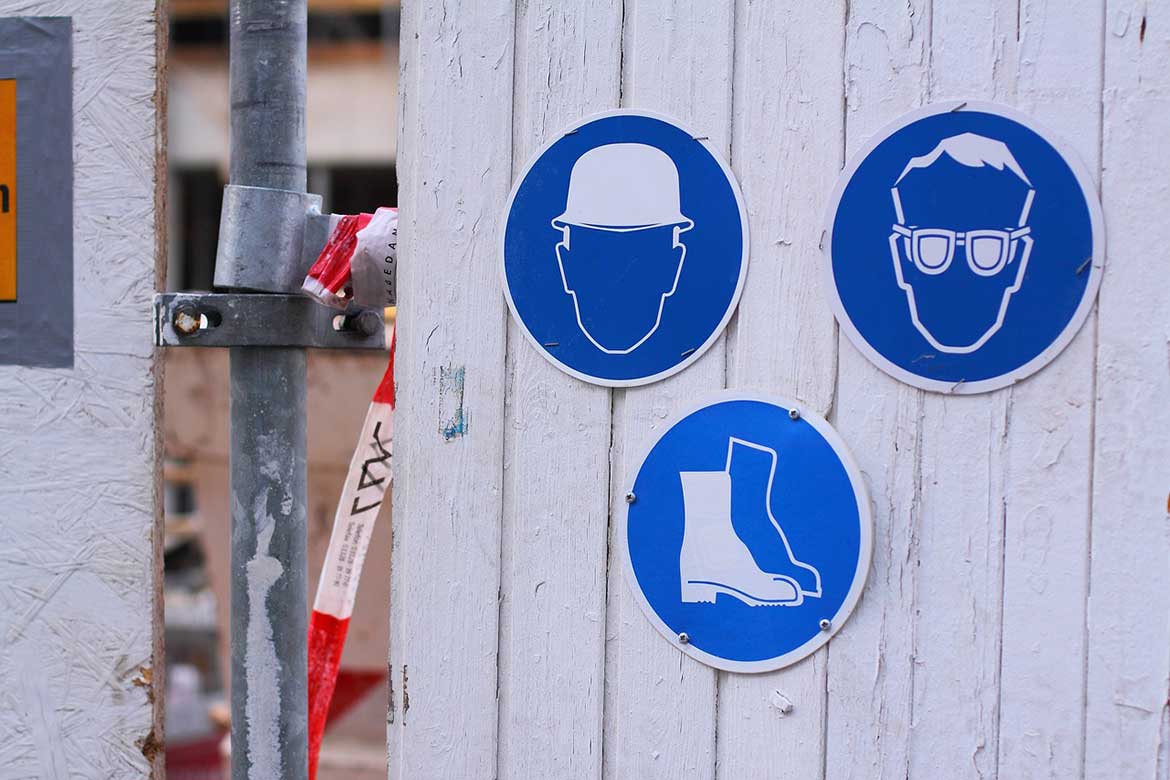10th January, 2023
10 Simple Construction Site Safety Rules
Construction sites are dangerous places to work. Follow these 10 simple construction site safety rules to keep yourself - and others, - safe. From wearing your PPE to following procedures, you can help make your site a safer place to work and prevent accidents.

Construction work is high-risk. Every year, thousands of people are injured at work on construction sites. And unfortunately, construction is often the industry with the highest fatalities each year.
The fatal injury rate (1.62 per 100,000 workers) is around 4 times the all industry rate.
On average, you are more likely to be injured or killed if you work in construction. But it doesn't have to be this way!
It is possible to stay safe on a construction site. And you should expect your construction sites to be safe places to work.
Yes, construction work has extra challenges. Every project is different and no two days are the same. For many, the varied work, team and environment are part of the attraction. But because of the changing activities and challenges, health and safety needs to be constant and consistent on your site.
Follow these 10 simple construction site safety rules to keep yourself, and others, safe.

1. Wear your PPE at all times
PPE is essential on construction sites.
When you enter a construction site, make sure you have the PPE you need. PPE is important, it's your last line of defence should you come into contact with a hazard on site.
Hi-viz helps make sure you are seen. Safety boots give you a better grip and protect your feet. Hard hats are easily replaced - your skull isn't.
Need more persuading? Here are 50 reasons why you should wear and use PPE.
PPE can't protect you if you don't wear it. Wear your hard hat, safety boots and hi-viz vest as a minimum, along with any additional PPE required for the task being carried out.

2. Do not start work without an induction
Most workers get an induction when they start a new job. In construction, you should get one every time you start work on a new project.
Each site has its unique hazards and work operations. No two sites are the same. Make sure you know what is happening so that you can work safely. Inductions are a legal requirement on every construction site you work on.
Not sure what to include? Get the construction site induction checklist to carry out and record your inductions.
Your induction is important. It tells you where to sign in, where to go, what to do, and what to avoid. Don't start work without one.

3. Keep a tidy site
Construction work is messy. Slips and trips might not seem like a major problem compared to other high-risk work happening on the site, but don't be fooled.
According to HSE statistics slips and trips accounted for 31% of specified major injuries on construction sites (2018/19 – 2020/21).
Remember to keep your work area tidy throughout your shift to reduce the number of slip and trip hazards. Pay particular attention to areas such as access and escape routes.
Download the free good housekeeping toolbox talk to motivate your team to tidy up on site!

4. Do not put yourself or others at risk
On a construction site, one wrong move could put you in harm's way. So create good health and safety habits, and stick to them.
Actions speak louder than words. Set a good example, think safe and act safely on site.
You are responsible for your behaviour. Construction sites are dangerous places to work - make sure you remain safety aware throughout your shift.
5. Follow safety signs and procedures
Follow construction safety signs and procedures. The safety rules and procedures for your site should be explained to you in your induction (rule number 2).
Not sure what all the safety signs mean? Read our guide on understanding construction safety signs.
You should also have a risk assessment for your activities. Make sure you read and understand it - it tells you what the hazards are and how to control the risks.
Control measures are put in place for your safety. Make sure they are in place and working before you start.

6. Never work in unsafe areas
Make sure your work area is safe. Know what is happening around you. Be aware.
According to HSE statistics 50% of fatalities in construction were caused by falls from height, 11% by something collapsing or overturning, and 10% by being struck by a moving vehicle (2018/19-2020/21).
Don't work at height without suitable guard rails or other fall prevention. Don't enter unsupported trenches. Make sure you have safe access. Don't work below crane loads or other dangerous operations.
Check that the area is safe before you enter.

7. Report defects and near misses
If you notice a problem, don't ignore it, report it to your supervisor immediately. Fill out a near-miss report, an incident report, or simply tell your supervisor.
Use whatever procedure is in place on your site for reporting health and safety concerns.
Action can only be taken quickly if the management has been made aware of the problem. The sooner problems are resolved the less chance for an accident to occur.
8. Never tamper with equipment
If something's not working or doesn't look right, follow rule number 7 and report it. Don't try and force something, or alter something, if you're not trained to or supposed to.
Never remove guard rails or scaffold ties. Do not remove machine guards. Do not attempt to fix defective equipment unless you are competent to do so.
- You'll get the blame if something goes wrong
- You could get hurt
- Someone else could get hurt
Do not ever tamper with equipment without authorisation.

9. Use the right equipment
One tool does not fit all. Using the correct tool for the job will get it done quicker, and most importantly, safer. Visually check equipment is in good condition and safe to use before you start.
Because of the possibility of wet conditions (both with outside work and wet trades), you should only use 110v equipment on construction sites. 240v equipment is strictly prohibited without prior authorisation from management and will only be used if no 110v alternative is available and additional safety precautions are taken.

10. If in doubt, ask
Unsure what to do? Or how to do something safely? Or do you think something is wrong?
Stop working, and ask.
It takes 5 minutes to check, but it might not be so easy to put things right if things go wrong. It's better to be safe than sorry. Mistakes on construction sites can cost lives, don’t let it be yours.
If you need help or further information speak to your supervisor.
Spread the message with our construction site rules toolbox talk. Use as part of the induction process, as a 5-minute awareness talk, or to display on site.
This article was written by Emma at HASpod. Emma has over 10 years experience in health and safety and BSc (Hons) Construction Management. She is NEBOSH qualified and Tech IOSH.
Need health and safety documents?
Search hundreds of health and safety documents ready to edit and download for your construction projects.
Find DocumentsRecent posts like this...

The Working At Height Hierarchy Of Control Explained (With Examples)
In this working at height guide, we look at the three levels of the working at height hierarchy of control, and examples of the control measures you can consider at each stage before moving to the next level.
Read Post
11 Free Ways To Improve Construction Site Safety
Don't have the budget or resources to improve health and safety on your construction site? Don't panic! Many health and safety measures are free (or low cost), and easy to put in place. In this post, we will give you 11 free ways you can create a safer site.
Read Post
Getting Safety Right When Working At Height
All work at height is dangerous, even if a job only takes a few minutes, and a fall from any height can be serious - even fatal. In this post, we will discuss the definition of working at height, the regulations and the minimum heights to consider. Let's get safety right when working at height.
Read Post